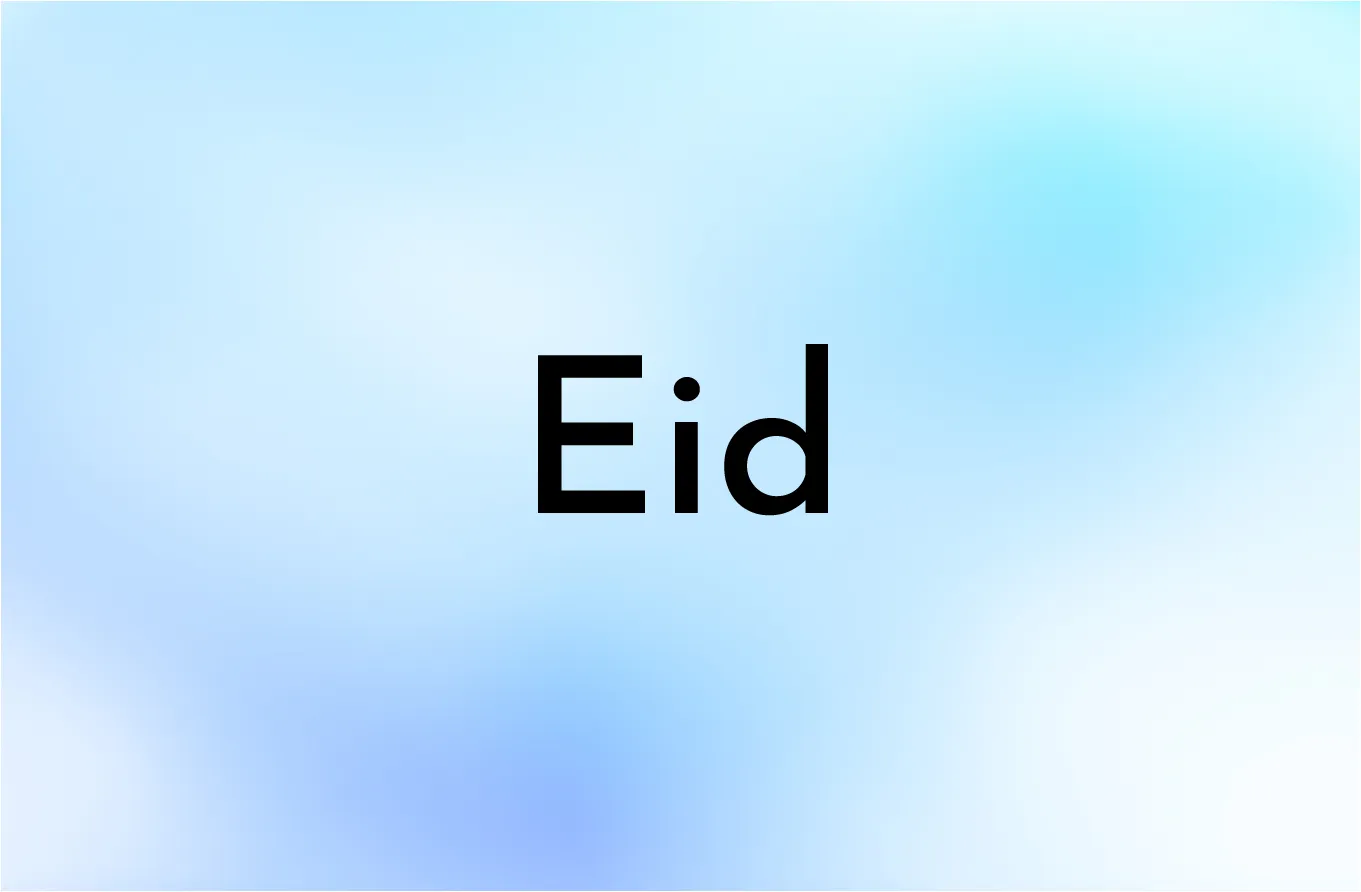How to Pray Eid Salah (Namaz)?
The Eid prayer is a special prayer that Muslims perform to mark the two main Islamic celebrations, namely Eid al-Fitr and Eid al-Adha. These prayers are considered an essential part of these festivities, and it's highly encouraged for all Muslims to participate.
1. Eid al-Fitr: This festival comes at the end of Ramadan, the holy month of fasting. The Eid al-Fitr prayer is performed in the congregation on the morning of the first day of Shawwal, the month that follows Ramadan in the Islamic lunar calendar. It serves as a time of joy and celebration after a month of fasting, prayer, and reflection.
2. Eid al-Adha: This festival commemorates the Prophet Ibrahim's (Abraham's) willingness to sacrifice his son Ismail (Ishmael) in obedience to Allah. The Eid al-Adha prayer is performed on the morning of the 10th day of Dhu al-Hijjah, the final month of the Islamic lunar calendar. It coincides with the annual Hajj pilgrimage.
The Eid prayer differs from the five daily prayers in Islam as it does not include Adhan (call to prayer) or Iqamah (second call to prayer). The prayer consists of two Rak'ahs (units of prayer) and has additional Takbirs (utterance of "Allahu Akbar," meaning "Allah is Greatest"). It is typically followed by a sermon (Khutbah) and is performed in a congregational setting, often in large open areas known as Eidgahs.
In addition to the prayer, other practices associated with Eid include giving to charity (Zakat al-Fitr for Eid al-Fitr and Udhiya/Qurbani for Eid al-Adha), wearing new clothes, visiting family and friends, and sharing meals and gifts.
The Eid prayer is typically performed in a congregational setting and consists of two Rak'ahs (units of prayer). It's slightly different from the regular Salah (prayer) in its format and the number of Takbirs (the saying of "Allahu Akbar," which means "God is the greatest"). Here's a simplified sequence of what to recite during the Eid prayer:
First Rak'ah:
1. Start the prayer by making the intention (Niyyah) in your heart that you're praying the Eid prayer.
2. Say the opening Takbir by raising your hands up to your ears and saying "Allahu Akbar."
3. Perform the additional Takbirs. According to the Hanafi school, there are three additional Takbirs. After each Takbir, lower your hands and fold your hands on your chest after the third Takbir.
4. Recite the Thana: "Subhanaka Allahumma wa bihamdika, wa tabarakasmuka, wa ta'ala jadduka, wa la ilaha ghairuk."
5. Recite Ta'awwudh: "A'udhu Billahi min ash Shaytanir Rajeem."
6. Recite Bismillah: "Bismillah hirRahman nirRaheem."
7. Recite Surah Al-Fatiha.
8. Recite another Surah or verses from the Quran. Traditionally, Surah Al-A'la is recited in the first Rak'ah of the Eid prayer, but this can vary.
9. Perform Ruku (bowing) and say "Subhaana Rabbiyal Adheem."
10. Stand up from Ruku and say "Sami Allahu liman hamidah, Rabbana wa lakal hamd."
11. Perform the two Sujuds (prostrations), separated by a brief pause in the sitting position.
Second Rak'ah:
1. After standing up from the second Sujud of the first Rak'ah, recite Surah Al-Fatiha.
2. Recite another Surah or verses from the Quran. Traditionally, Surah Al-Ghashiyah is recited in the second Rak'ah of the Eid prayer, but this can vary.
3. Perform the additional Takbirs. According to the Hanafi school, there are three additional Takbirs before going into Ruku. After each Takbir, you should let your hands hang by your sides. After the last Takbir, go into Ruku.
4. Complete the second Rak'ah as normal with Ruku, standing, two Sujuds, and finally sit for the Tashahhud, sending blessings on the Prophet Muhammad (peace be upon him) and ending with the Tasleem ("As-salamu 'alaykum wa rahmat-Allah") to both sides.
Remember, these steps can vary slightly depending on your particular Islamic school of thought. Always consult your local mosque or a knowledgeable person if you have doubts about performing the prayer correctly.
After the prayer, the Imam (leader) will usually deliver a sermon (Khutbah). Listening to the sermon is considered a Sunnah (the practice of the Prophet Muhammad, peace be upon him), although the prayer itself is complete at this point.
Here is a step-by-step guide on how to perform the Eid Salah. Please note that there can be minor variations depending on different schools of thought within Islam:
Before the Prayer:
1. Wake up early, take a bath (Ghusl), and wear your best clothes in honor of the day of Eid.
2. Eating an odd number of dates before leaving for the Eid prayer on Eid al-Fitr is customary, but this is not done on Eid al-Adha.
3. Proceed towards the Eidgah (an open area where Eid prayers are traditionally conducted) or the mosque while reciting Takbir ("Allahu Akbar, Allahu Akbar. La ilaaha illallahu Wallahu Akbar. Allahu Akbar wa lillahil hamd").
Performing the Eid Salah:
1. First Rak’ah (Unit of prayer):
1. The Imam will begin the prayer without Adhan or Iqamah.
2. The Imam will start by saying the Takbir of Ihram ("Allahu Akbar"), and you should follow by raising your hands to the ears and folding them beneath the navel as usual.
3. The Imam will give additional Takbirs. In the Hanafi school, this is done three times. After each Takbir, you should raise your hands to the ears and fold them again after the third.
4. After this, the Imam will recite the Thana, then Ta'awwudh and Bismillah quietly, and then begin the recitation of Surah Al-Fatiha, followed by another Surah. Usually, it's Surah Al-A'la in the first Rak'ah.
5. Continue the prayer as usual by going into Ruku (bowing), rising from it, and performing two Sujuds (prostrations) with a sitting pause.
2. Second Rak’ah:
1. Stand up for the second Rak'ah, and the Imam will begin recitation with Surah Al-Fatiha followed by another Surah, typically Surah Al-Ghashiyah.
2. Before going into Ruku, the Imam will recite the additional Takbirs again. In the Hanafi school, this is done three times. After each Takbir, you should let your hands hang by your sides. After the last Takbir, you go into Ruku.
3. Complete the rest of the Rak'ah as usual, including standing from Ruku, performing two Sujuds, and sitting for the final Tashahhud.
4. End the prayer by turning your face to the right and then to the left, saying the Tasleem: "As-salamu 'alaykum wa rahmat-Allah" each time.
After the Eid Salah:
1. After the Salah, it is Sunnah to listen to the Khutbah (sermon), which the Imam will deliver.
2. Once the Khutbah is completed, Muslims congratulate each other on the occasion of Eid, and it's customary to visit family and friends and celebrate together.
Remember, these steps can vary slightly depending on your particular Islamic school of thought. Always consult your local mosque or a knowledgeable person if you have doubts about performing the prayer correctly.
Related Posts
0 Comments
Recent Posts

How To Pray Salat Al-Duha?
Salat Al-Duha: Salat al-Duha, also known as Duha prayer, is a voluntary Isla...
Sun 06, 2023

How to Pray Eid Salah (Namaz)?
Eid Prayer: The Eid prayer is a special prayer that Muslims perform to mark...
Sun 06, 2023

How to pray Salat al-Janazah?
Salat al-Janazah: Salat al-Janazah, also known as the funeral prayer, is a p...
Sun 06, 2023



